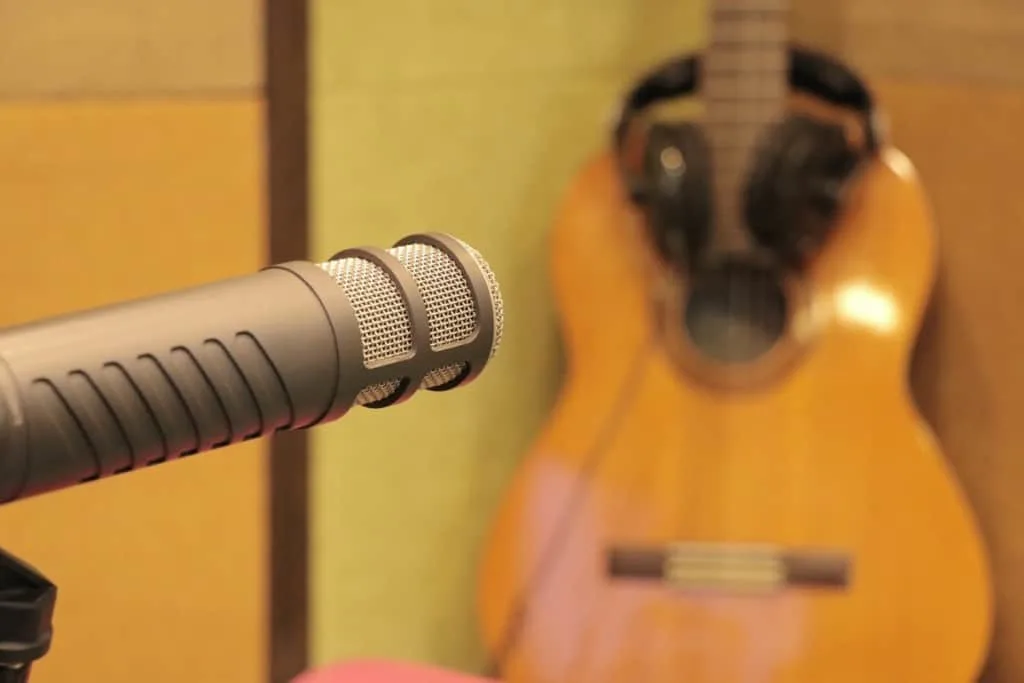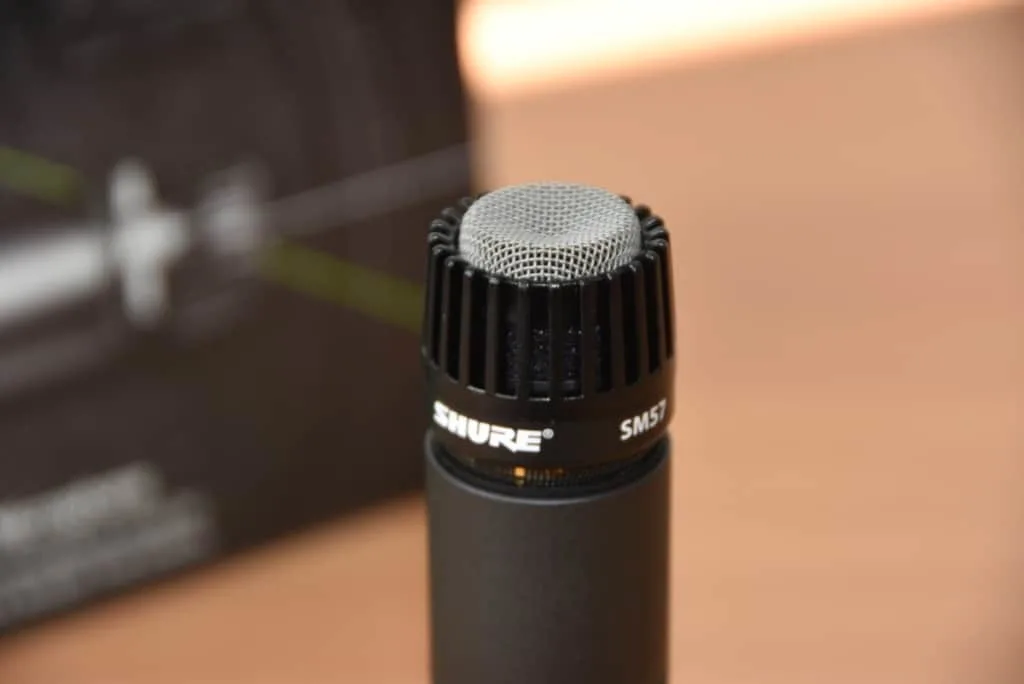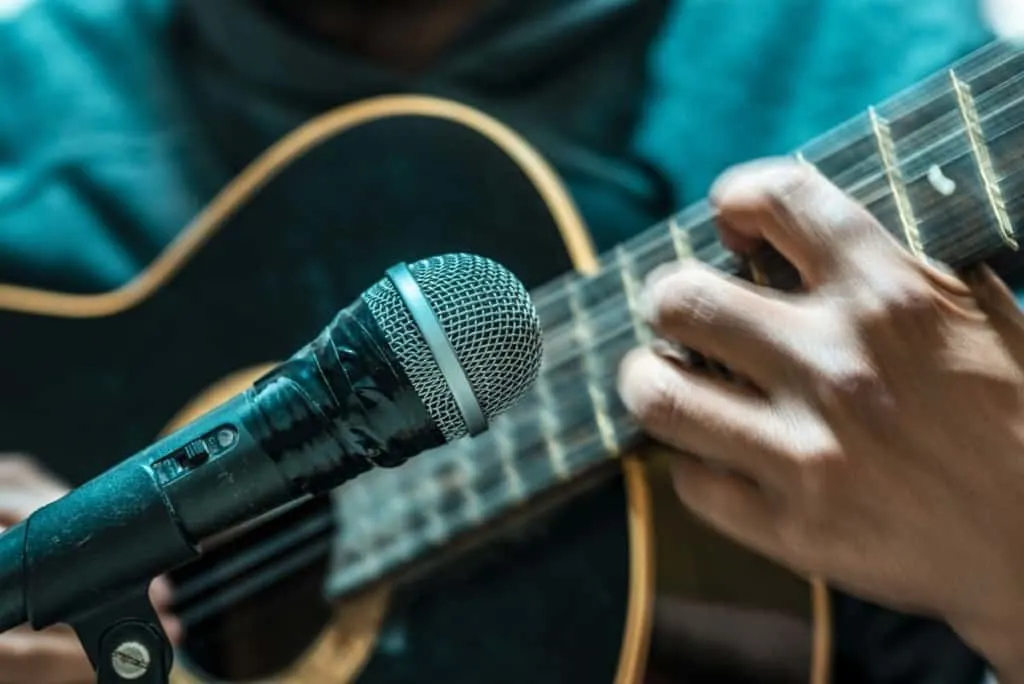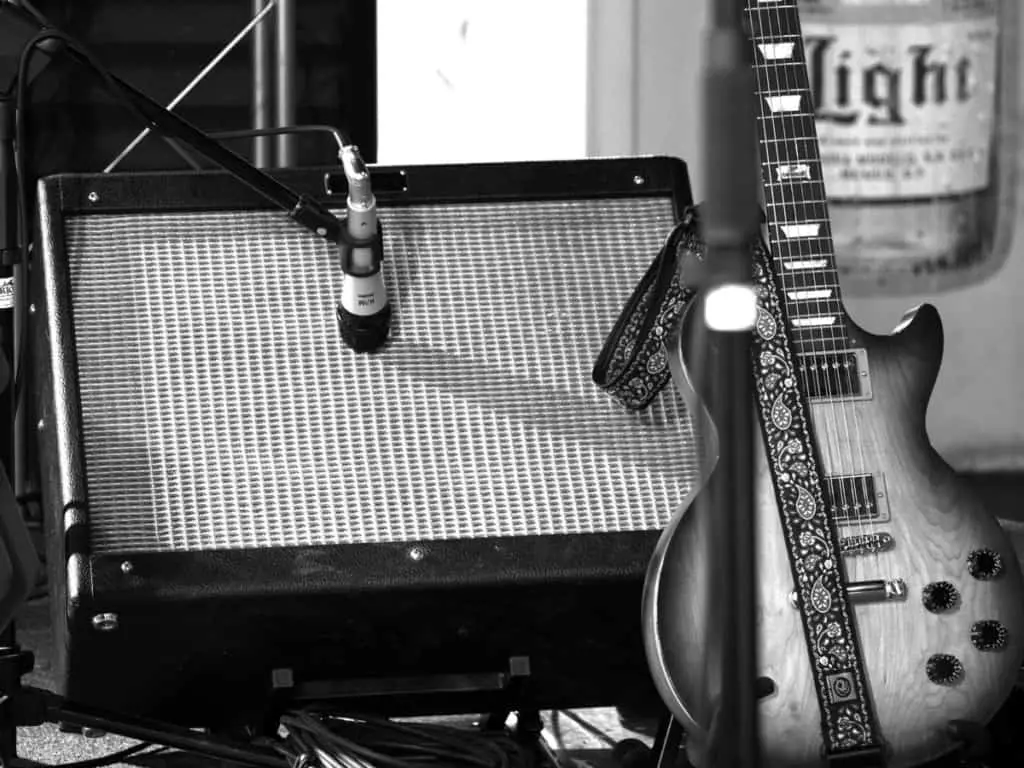Are you confused about how and why to record your guitar in mono or stereo?
While most music we hear today is mixed in stereo, not every instrument is recorded in stereo. Based on the context, genre, and desired aesthetic – you can record a guitar using either method. In this article, we understand the ins and outs of recording a guitar in mono or stereo.
Generally, electric guitars are recorded in mono and may be double-tracked with panning. On the other hand, acoustic (steel string) and classical (nylon string) guitars are either recorded in mono or using stereo micing techniques depending on the musical context and goals.
Before we explore a detailed answer, let us brush up on the basic terminology for the sake of clarity. Mono stands for monophonic and stereo is short for stereophonic. They represent the number of channels used to record and playback the audio.
As you can imagine, mono uses one track to record and playback, and stereo uses two. However, the musical arrangement and context can play an important role in deciding which method of recording is appropriate. Here are some important factors:
- What is the role of the guitar in the genre?
- Is it an electric or acoustic guitar?
- How many instruments are on the track?
- How many other guitars or guitar parts are on the track?
Now that we’ve addressed the meat of the question, let us deliberate on the important nuances and explore situations when mono would be better than stereo and vice versa.

Recording An Electric Guitar In Mono:
Most recording artists prefer to record electric guitars in mono. Generally, it is relatively difficult to capture a reasonable stereo sound while recording a single electric guitar. In genres like rock and metal, the standard technique is to track rhythm guitar parts in mono and “double track” them.
The term double-tracking refers to recording the exact same guitar part two times and then panning one to the left and the other to the right. This works better than recording the electric guitar in stereo for two main reasons:
- i) It adds depth and creates a wide stereo spread, and
- ii) Each track has “character” – uniqueness due to the minute variations in timing and dynamics.
You can record an electric guitar in stereo using a stereo sound source like stereo amplifiers and effects units like reverb, chorus, flanger, etc. But stereo amplifier choices are limited and expensive. The other common method is to use two separate amplifiers with a line splitter pedal or one amplifier with two microphones.
When you record an electric guitar in stereo, especially distortion tones, they crowd the sonic spectrum. This means they will compete with the vocals (or other instruments) for your audience’s attention and will make it really difficult to mix the track.
Alternatively, when electric guitars are double-tracked instead of recorded in stereo, you can pan them and leave them out of the mids (or other frequencies) to create room/space for the vocalist and other instruments.
- The most common reason to track an electric guitar in stereo is when you want to record a guitar solo.
Intermittently, you will bump into some musical contexts – like ambient music or post-rock – when the genre and stylistic needs may demand recording an electric guitar in stereo. However, for the bulk of the material, electric guitars are recorded in mono.
Recording An Acoustic Guitar In Mono Or Stereo:
A mono recording using a single Shure SM57 dynamic mic is the most common way beginners or home-recording enthusiasts record an acoustic guitar. You can also record an acoustic-electric guitar (with a pickup and/or a preamp) using a D.I. if you want to lay down quick tracks.
Check out the ever-popular Shure SM57 Microphone here on Amazon.

A mono track can be recorded with any no-frills dynamic microphone. It is straightforward, budget-friendly, and hassle-free. However, you may want to stereo mic the acoustic if you are a songwriter or your track is based around the acoustic guitar with little to no other instruments in the mix.
This can involve additional costs and relatively advanced recording techniques. A stereo recording will require some know-how of stereo microphone placement. The spaced pair (A/B) technique and the coincidental pair (X/Y) technique are the most common ways to use two microphones for a stereo recording.
If the acoustic guitar is the primary focus of the composition/arrangement, then it will be center stage.
In this case, you should record it in stereo using close mics stereo techniques. All stereo micing techniques need basic knowledge of mic placement and the right distance between microphones.
The distance will ensure that you don’t have any phasing issues. Phasing issues refer to a slight difference in timing due to the distance of the microphone from the physical sound source. Phasing issues sound unpleasant, diminish the audio quality, and will muddy the mix.
As you introduce more instruments like bass, drums, keyboards, etc to the mix, the acoustic guitar begins to assume a very different role. In such situations, it has a percussive or rhythmic role that would benefit from mono recording.
Generally, most beginners prefer to record an acoustic guitar in mono because:
- It takes less space in your track
- It is easier to set up one mic
- The equipment required is cheaper
- There are no phasing issues to worry about
Moreover, to thicken up your arrangement you always have the option to double track and pan multiple acoustic guitar tracks.
Similarly, you always have the option to record an acoustic guitar in stereo and use just one mic later. However, you’ll have to ensure that you’ve kept that one mic in an optimum position before you start recording.
Furthermore, you can mix and match microphones – like a condenser or ribbon – to do a multiple mono recording and pick the best results in the mixing stage.
Choosing Gear Can Be Really Hard!
Home recording requires a whole series of equipment, and it can be difficult to do the research to figure out exactly what to buy depending upon your budget.
I have written a complete guide to exactly which equipment you should get depending on your budget.
In conclusion, as a rule of thumb, you record an acoustic guitar in mono if it is a part of a bigger or busier mix and you’d record it in stereo if it is played solo (alone) or in a spare mix.

Some Key Differences Between Mono And Stereo:
Focused Mono vs. Stereo Width
If you are tracking an acoustic guitar, for instance, they will create width, which is beneficial in arrangements that don’t have too many other instruments. An acoustic guitar in stereo can also be ideal when it is the main instrument in an otherwise sparse arrangement.
Stereo recordings are good if you want to add depth or create a wider sonic landscape.
Mono And Stereo Tracks Volume:
Technically speaking, a loudness meter will display stereo and mono tracks to have the same “numerical” loudness. However, you should account for what is commonly called “perceived loudness”. The human brain is likely to perceive a guitar tracked in mono to be louder than a stereo-tracked guitar.
Mono recordings are perceived to be louder by the audience upon playback.
Centered Sound And Stereo Imaging:
Have you ever noticed how the vocals always seem to be placed in the center even when you are listening to music on earbuds or studio monitors placed reasonably apart? This is due to stereo imaging – an important aspect of audio recording and playback.
If a dog barks when you are out in the street, you know the direction it is coming from and make a reasonable guess as to how far the dog is. This is because the human brain and ear have evolved to distinctly estimate the distance and direction of a sound.
Realistic sound recordings cater to this human ability to perceive and locate sound in a spatial landscape. Mixing engineers use direction and distance to create a life-like recreation of sound that is similar to what we experience when we attend a live concert.
This can be done through stereo imaging. When done well, this makes the mix more pleasurable and palatable to the audience. However, this is a vast field with a sizeable amount of information that is best left for a future article.

Related Questions
What Is A Mono Recording?
A monophonic (mono) sound or recording refers to any music track recorded and played back using one audio channel.
For instance, if you record an acoustic guitar using one microphone it will yield a mono recording. You will record one track of one mic on one channel to create a “mono guitar track”. For mono tracks, you will get the same audio output from both speakers during playback. This is known as “centered” audio.
What Is A Stereo recording?
A stereophonic (stereo) sound refers to a track recorded and played back using more than one channel, usually recorded using multiple mics and/or speakers.
With stereo tracks, you can pan the sound, resulting in varying audio signals through the right and left speakers. This resulting sound approximates how a listener perceives music in a live concert.
What Is The Difference Between Mono And Stereo Recording?
A stereo signal needs two audio channels to record a guitar and playback the audio track.
On the other hand, mono signals only need a single audio channel to record and playback. However, the result is drastically different for the listener. You can check out this video that demonstrates the difference between mono and stereo acoustic guitar recordings.
Hopefully this article has helped you make an informed choice on recording guitar in mono or stereo, whichever you choose be sure to have fun with it, remember there’s no right or wrong way to make music.
Feel free to check out my article that shows how to connect a guitar to regular speakers. You might create something unique!
Happy music making.
